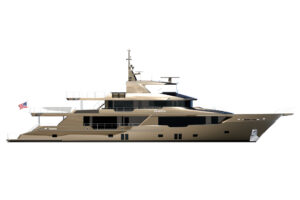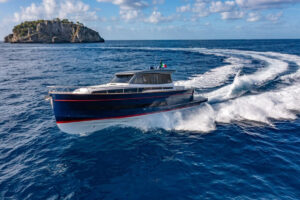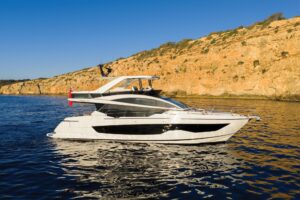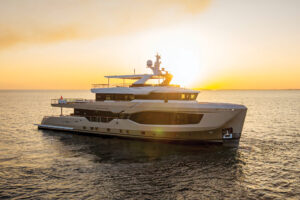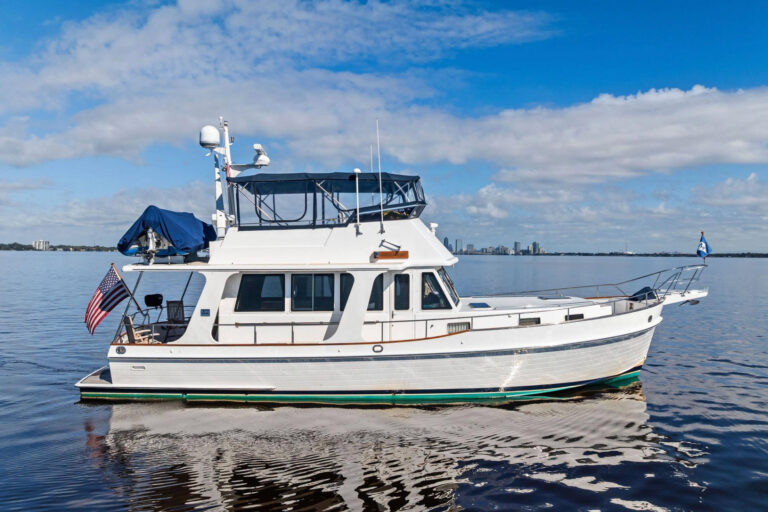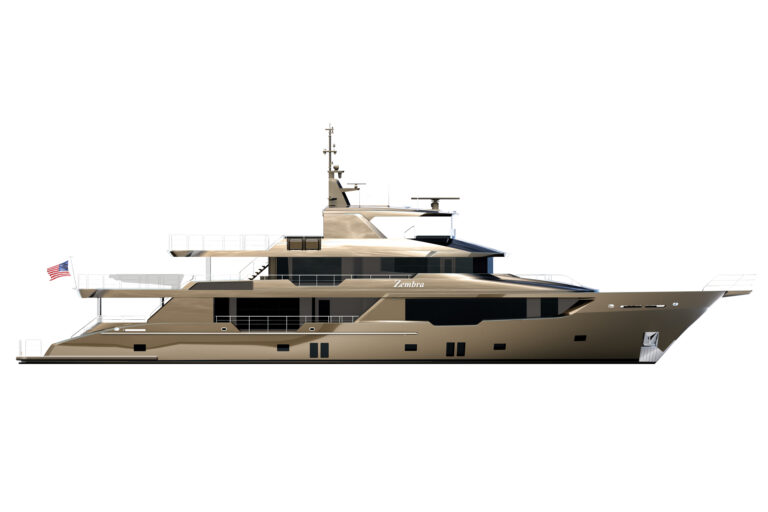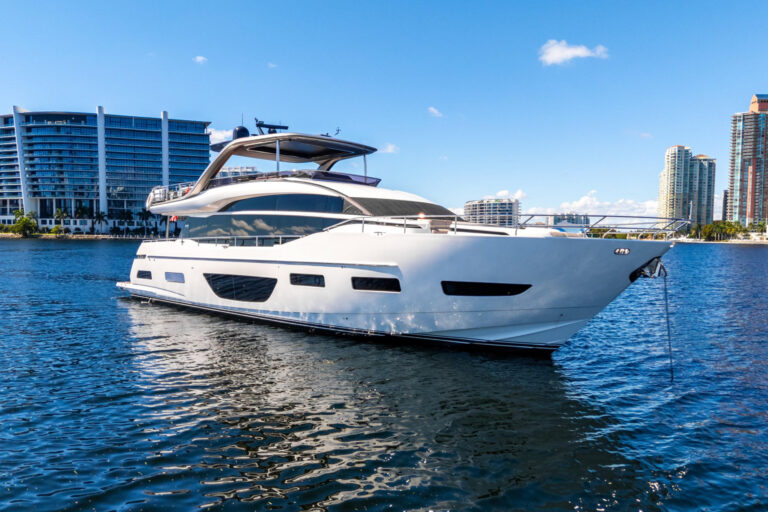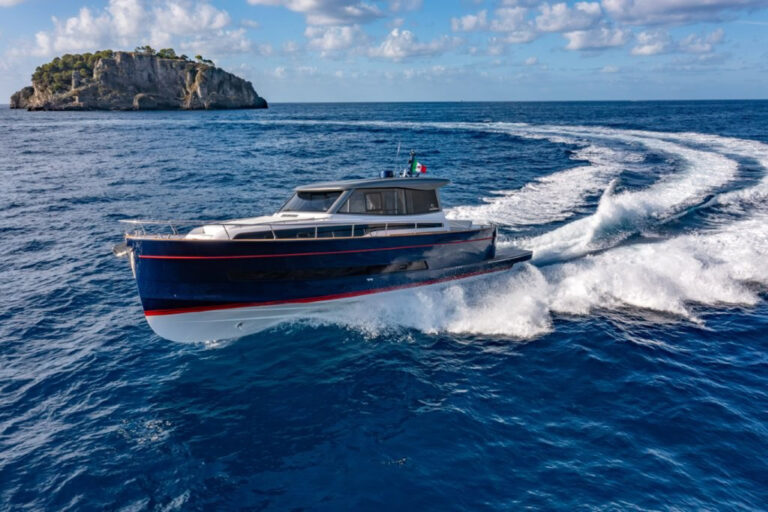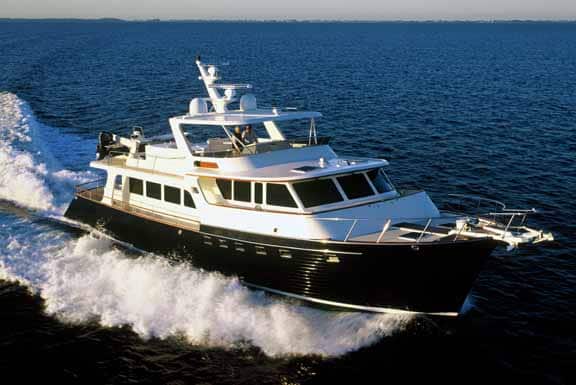
Marlow Explorer 78
When I think of my retirement, decades from now, I imagine a little cruising, perhaps mixed in with some occasional writing, travel and a slower pace. Something I don’t envision is starting a boatbuilding business from scratch halfway around the world and teaching several hundred workers how to build boats to a demanding standard, all while maintaining a thriving sales and service center in Florida. That’s because I’m no David Marlow.
This is the second time the self-made boat nut has tried to retire, only to return with a new venture. He seems to have more get-up-and- go than all The Rolling Stones combined (well, maybe not Keith Richards). After Marlow retired from a successful yacht sales and service business, he rustled out of the Maine woods to relaunch Marlow Marine and quickly became the top-selling Grand Banks Yachts dealer. This is when I first met him and was instantly impressed by the level of service and energy at his yard in Snead Island, Florida. More importantly, I sensed his passion for whatever project he was working on at the moment; it simply danced all around him. You would have to be dead not to be moved.
Today, David Marlow has one project, albeit a huge one, with over 40 years of passion and knowledge behind it-the Marlow Explorer series. In his Snead Island office there are piles upon piles of papers, drawings, catalogs and notes that evolved into the Marlow project and continue to keep it fueled. And Marlowe has definitely turned up the heat.
It was in this office several years ago that I first learned of the new Marlow Explorer 78. Like a proud parent, Marlow gave me a sneak peak, slowly turning over each page of the drawings, recounting a story about each detail on the page. “This particular owner wants a spiral staircase right in the middle of the pilothouse to the accommodations. Man, we rung our brains on that one,” Marlow said. “But I think it will work.”
Eighteen months later, having had the chance to see the finished product, I think I can attest that this piece of complicated carpentry “worked.” Moreover, I’ll go on record as saying that the entire 78 is one of the best examples of semi-custom boatbuilding that I’ve seen.
Marlow builds each Explorer-the series includes seven models from 53 to 78 feet-at his facility in China. When I mentioned to Marlow that some yards I’ve spoken to want keep their China or Far East building programs under the covers, he looked surprised. “Oh no, I want people to know that we build in China. Like anywhere, you get what you pay for,” Marlow said. “You can pay for a piece of garbage or you can pay for quality. We pay for quality.”
Marlow decided early on in the project’s infancy to open his own yard versus building with subcontractors. The most compelling reason for this, he explained, is that it allows him to define Marlow Explorer’s corporate culture.
“When I used to pull up at the factory, the workers would run from me. Now they come up with new ideas and are real proud of the work they are doing,” Marlow said. “Like me, they really want to make each boat better than the next.” You may not get this level of participation if the yard is building boats for several companies.
They’ll have their work cut out for them, as they try to improve the next 78. Except for the hull design, no Explorer is alike. The underbody is similar to all the Explorers and incorporates twin strut keels. One of the most significant benefits of this design is the protection of the running gear and underwater bearings. There are no exposed shafts or struts to find underwater debris or to be damaged during a grounding. At least once a month I talk to somebody who is up on the hard after hitting a submerged object along the ICW-“object” including everything from telephone poles to garbage cans. The net result is usually the same; bent shafts, props and struts, followed by a long wait while parts are ordered and delivered.
In addition to the added protection, the twin keels enhance performance. Basically, a hollow is molded into the bottom about amidships, and a wave forms in this area. This wave will cancel out a large stern wave, increasing performance. I’ve run several Marlows and can attest that each hull is easily driven and surefooted. Although I’ve not been in any large beam swell on an Explorer, by design these twin keels should help dampen roll as well.
During our sea trial, we hit a top speed of 25.4 knots on a fully loaded yacht, less food stores, with a pair of 3412 Caterpillars. On this particular 78, the owner chose to have the Cats “D” rated, reducing the horsepower from 1,350 to 1,250. This reduces the top speed, but provides a more economical cruising speed. According to Marlow, another 78 with “C” rated 3412s, has a top speed of approximately 30 knots. This impressive performance can be attributed to both the hull design and lightweight construction techniques employed in each Explorer.
Each hull is built with Kevlar and vinylester resins and then vacuum-bagged. I crawled along a navy blue 78 at the Ft. Lauderdale Boat Show and could not find a blemish in the glass. In addition, the use of composites and coring in cabin soles and bulkheads has a beneficial effect on the interior accommodations by allowing Marlow to draw a relatively low and lean profile while not skimping on interior volume. These high-tech building techniques reveal one of the primary benefits of building in China-a reduced labor rate that allows the builder to spend more money on items like technology.
Marlow also puts these savings back into equipment and hardware. I don’t think it’s an overstatement to say that almost every component from water pumps to the door hardware has been evaluated before it is added to the bill of materials. It’s all top shelf and all very expensive. In order to keep the cost of each Marlow under control-and these boats represent one heck of a value-Marlow concentrates on production efficiencies. “We have one team whose only job is to walk around the factory and figure out how we can be smarter about how we build each boat and save money,” Marlow said.
One area I can’t imagine Marlow is saving any money on is the fit and finish of the accommodations. The saloon uses planks taken from the same log of teak and as a result has a uniformly golden finish. Even the inside of the drawers is executed with an exceptional level of detail. “The finish carpenters have to pass a series of tests before they can start working on the details,” Marlow said. “The final test is make a desk for the local school in a certain amount of time. Some were very elaborate with inlays and burls. One of my favorites was a very simple desk, but once you opened it, it was amazing.”
Each Marlow can be ordered with a variety of layouts. Our test 78, for example, was very different from another 78 I saw in Marlow’s yard. Each features a fully equipped pilothouse, which has a very good 360-degree line of sight. Marlow was able to maneuver the 78 from this lower station in his yard’s basin packed with other boats, giving us mere inches to work with. If you had asked me, I would have said it could not be done. The line of sight from the bridge over the bow is also good; an aft docking station will facilitate backing into a slip.
The engineroom follows the same level of detail. I’m a fan of finishing an engineroom with Awlgrip. This makes it easier to keep clean, in addition to just looking cool. Adding to the cool factor are things like stainless steel engine mounts. You don’t need to get them, but boy do they look sharp.
I was also able to see the detail and engineering that went into the fuel tank. The fuel system is designed to solve a common flaw on many yachts-the inability to use the full fuel capacity. The tank follows the contour of the hullsides, terminating at a sump at the bottom of the tank. All the fuel flows and is forced to this sump and pick-up point, allowing you to use all the fuel except that in the sump. Furthermore, two inspection plates allow a periodic cleaning of the tank, something I recommend.
If you’re in the market for a traditionally designed motoryacht built to an exacting standard, you would be wise to step aboard a Marlow. And if you really aren’t in the market, you would be wise to stay away from David Marlow. I assure you his passion for his product is contagious and downright inspiring.
Contact: Marlow Marine, (941) 729-3370; www.marlowmarine.com.

